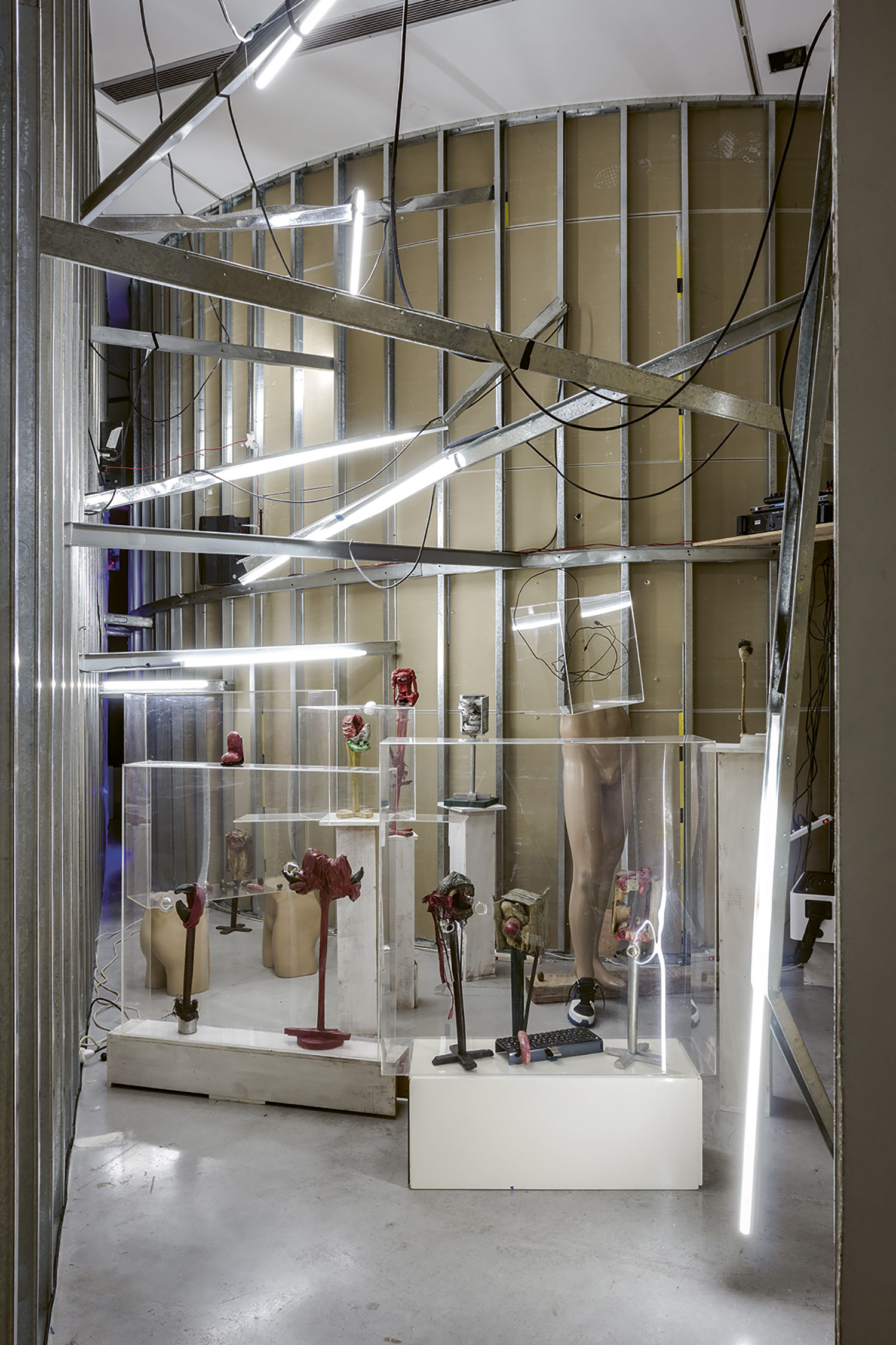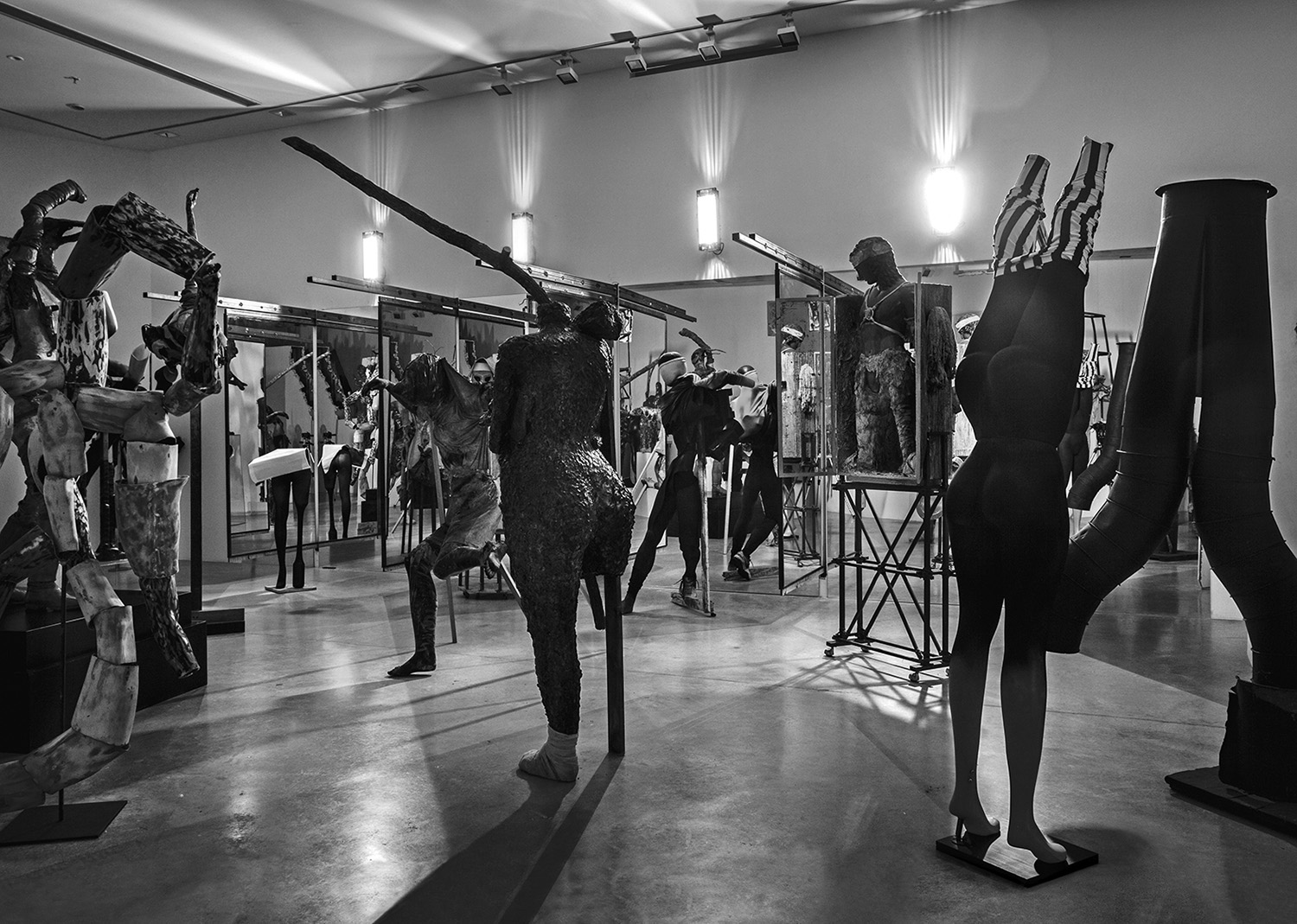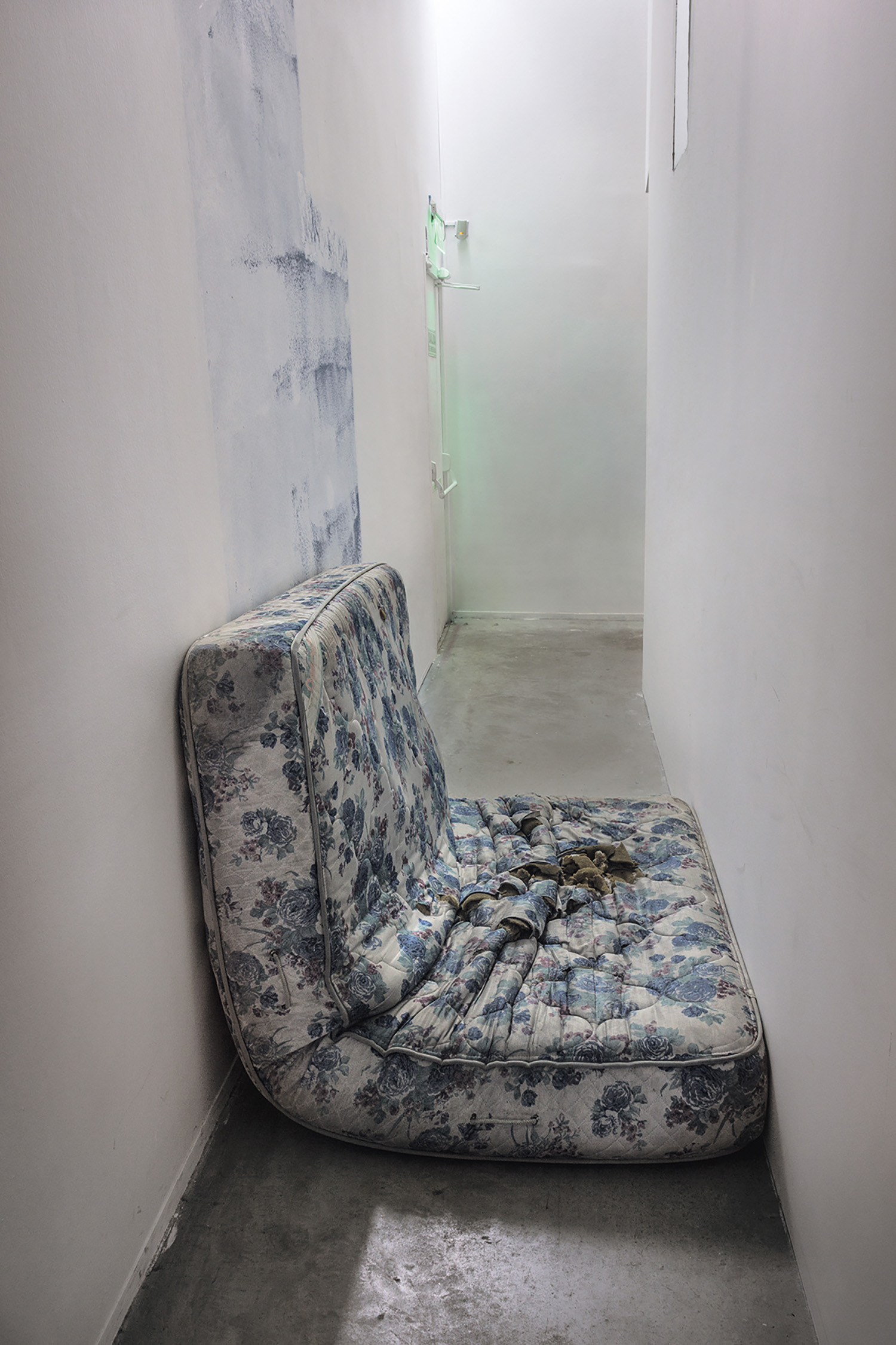
28.01.2019
EXTRACTS is a section in which we share excerpts from texts published by Temblores Publicaciones, Terremoto’s publishing house. We present our third extract, “Every Artist is a Communist” from RUB, a publication that revises recent works by Argentine artist Diego Bianchi.

I envision this text as the politicalization of an act of politicalization. The act is El presente está encantador (EPEE), an exhibition-work that confounds us. My politicalization of that act of politicalization consists of signaling some coordinates of the current juncture, of the political here and now, to which that act is, voluntarily or involuntarily, bound.
What first jumps out is how clearly EPEE questions the figure of the author at a time that aims to redesign it as one of the many avatars of a new model of individuality—the entrepreneur. For the entrepreneur, any stance, any sign, and any affect must conform to a logic of profit and loss. A logic that attempts, in effect, to take on—and to take in—any and all social scenes. In the case of art, that logic turns public museums into semi-private instances, replacing open contribution and essential debate with management, personalized service, and impact. That logic founds private museums as legitimation strategies—or, sometimes, as centers of operation—for mega-real estate and finance projects. That logic destroys marginal lives, cultures, and ecologies when it dresses gentrification up as “art districts” and “technology poles.”[1] That logic means public subsidies are allocated to private companies in a new Darwinist control over practices and forms of imagination. That logic turns galleries and art fairs into spaces where the meaning of works and discourses is naturalized. In macro-political terms, that logic uses all of the state’s resources—and illegal and unconstitutional resources as well—to validate itself as axiomatic of the real.
Author, of course, is not a synonym of artist, though the two concepts are often confused. Author refers to a way the modern artist is consecrated as creator of a work thought to be original, constructed as a whole onto itself, and upheld as inimitable—hence the umbrella or weapon of plagiarism—for the sake of its sale. (That work, insofar as considered product of creativity thought to belong to an individual, a group identifiable as an individual, or a sum of individuals, is also the author’s property.) The figure of the author can also, therefore, readily be turned into an object of censorship in situations of extreme hierarchization of order under rule of law—a more and more widespread state of affairs in times of the hyper-concentration of global corporate power and the proliferation of post-democratic subjectivities and performativities.

But if, in modern terms, the artist is an author to the extent that she is placed on a market, she has, in an absolute historical arc, always been—and is by definition—communist insofar as—and only insofar as—she creates. Because there is no creation without a collective from which the artist is nourished and which she nourishes, in which she traces relations based on camaraderie, alliance, or dispute with peers—present, past, and future—, those who, by means of conversation, the artist owes the singularity of what she produces.
An artist is made and shaped by the bodily stances, the ideas, the experiences, the marks that other artists have left on art and on its worlds, and also by what they have not left. Similarly, a work is made and shaped by many different works produced by many different cultures, engaging one another through dialogue, parody, challenge.
There is, though, a place where all of art’s multiplicity comes together, and it is not the author, but the viewer: the viewer is the space where all of the quotes that constitute the work, each and every one, are inscribed. The work’s wholeness, its unity, does not lie in its origin, but in its end. But that end is not personal: the viewer is someone with no history, biography, or psychology. It is just someone who holds together in a single field all of the traces that constitute the work.
The viewer is always threatened as well. She has been whenever, like now, capitalist control over life forms has operated seamlessly, with no resistance or with a resistance incapable of taking the offensive. Mass media monopolized on a global scale, algorithmic control of Internet contents, perceptive system addicted to 24/7 cellular-connectivity technologies, pharmaceutical-medical monitoring protocols, and reduction of bodies to primary modular responses, all designed and consumed to do away with perceptive difference and space of feeling, to annihilate reception as political actor.

There is much more to say about the artist, more and more alone in the management and promotion of her work, adept or clumsy at the endless task of aligning her subjectivity to the codes of this hyper-business world. Indeed, artists often consider themselves unique in a sea of equals; they give up any effort at criticism and relate to peers in terms of competition rather than cooperation—competition for resources that grow scarcer and scarcer as they are more and more concentrated. An artist-author that is no longer even a subject behind a work, but just an image before it, one that virtually takes the place of that work. Artist as entrepreneur and as consumable good—that is the figure that would be dominant.
Paradoxically, the artist, now more than ever, is a worker in the system. Insofar as entrepreneur, she is part of the cognitariat, subject to ever greater precarization. The artist is responsible not only for making the work, but also for the production of the added values that turn that work into a super-image. The real beneficiaries of that work and that image will be global capital (transnational corporations, bankers, venture capitalists, real estate developers, etc.), many of them owners of art institutions and sponsors of programs that, in perhaps the sole transparent act in the offshore universe, often bear their names.
Before that enchanting hell, EPEE seems like a work-exhibition that simply mocks or ignores some rules of the institutional exhibition system, its supreme rule, actually: individualize the works exhibited in order to protect the author’s rights and, hence, affirm the museum’s role as guarantor and owner of a certain number of works, that is, of a collection called both patrimony and legacy.

But, to compose the scene, what EPEE does is combine, jumble, and camouflage works from the collection with other materials—furniture, architecture, objects, etc.—to such an extent that we do not know where the works of others come to an end and the interventions and visual ideas of the artist-exhibitor begin. Every limit is on hold, intertextualities are assumed and parodied while the singularity of the post-production process is underscored, a process indistinguishable, here, from an instance of production that never even took place.
This is by no means the first time that an artist has intervened on the works of others, making—or not making—an exhibition-work that can be called her own only in a certain sense. But there is intervention and then there is intervention. There are artists who impose their work on the work of others in order to underscore—or at least insinuate—that the work, no matter how collective it may be, is actually theirs. By that means, the artist blurs the polyphony of the many with stylemes so personal that the connoisseur will be able to tell who’s who.
But other artists are not afraid to cast doubt on their own work for the sake of an openness new even to them. They understand that to blur definitions, to undefine, does not mean to steal or to be stolen from, but to share oneself with others, to reinvent mutually, to question and break imposed limits in order to come together. EPEE is the work of an artist of that type. The artist loses her person, lets it go, in a subjectivation that, immersed in the collective, is also distinctive, individualized. Like a reverse Pink Panther that, imitating everything, reproducing everything, disturbing everything, but without imitating or reproducing or disturbing anything at all, paints the world her color, pink on pink—camouflaged, derived, diverted multiplicity. She becomes world to become imperceptible, to become a-significant, a-meaningful, to trace his rupture.
So the artist as author, the artist rendered hyper-image in the midst of her precarity, is, in EPEE, once again interrogated from the perspective of the communist artist. Given how the current administration ideologically equates cultural spaces and recreational spaces, pivoting its communication around the word “enjoyment,” the work-exhibition EPEE entails, from the outset, an uncomfortable, even annoying, passage, a way of associating physical unease with mental or emotional provocation stemming from a critical relationship to the work of art. A work-exhibition that is, in its way, perilous to walk through, while the mania for social policing curtails and paralyzes the possibilities of circulation, the ties and the overall chemistry of affect. A work-exhibition that disturbs with its excess of sound and light, when today even the slightest ruckus is immediately on the repressive radar of the police apparatus and the lynch-mob citizenry. A work-exhibition that presents images and bodies steeped in subliminal, conflictive, monstrous eroticism in times of aggravated heteronormativity that strikes down and kills anything that does not look like it (women, gays, transvestites, etc.) with governmental indifference or with all the efficacy of a subtly constructed false consciousness. A work-exhibition where the museum guards are elevated to the status of surveillance performers—a literal human Bentham panopticon tower—as an allegory for the system of total surveillance of urban agglomerations in which we currently live: twenty-four hour digital monitoring of streets, open lots and buildings, of the climate, the flora and fauna, of pedestrians and drivers, of any flow that might be translated into information. A work-exhibition that, by means of accumulation, fragmentation, and dispersion, incites vast instability when what the machinery of neoliberal war tries to do is contain subjectivities, hold them back, in a pathologizing predictability that, for the health of the sick, shuts up any question and shuts down any detour, any form of anomaly.

A work-exhibition that grates against those forms of paralysis as it makes the voluptuous decision to produce new meanings and movements in the works of others and—in that embrace—invent another form of eroticism. A form of love that affects those works’ zones of feeling and perception in terms of height, color, temperature, and morphology (if not actually, then virtually), altering, complicating, and also mocking our perceptions of them. At least one example suggests the magnitude of that disruption: weeks before Bianchi asked me to write for this book, one of the artists with work in EPEE spoke to me, as if in a trance, of the delicacy, precision, and insolence with which EPEE had treated his work, and in so doing made it be seen from a new, almost magical, point of view.
Of course, insofar as it blurs the limits between works, this work-exhibition questions the work of art as fetish, counterpart of the figure of the author. EPEE puts before us the ironic task of trying to discover where a Bianchi begins and where a Heredia ends, or where a Vidal begins and a Bianchi ends. But EPEE is, above all, a congregate, a hodgepodge, a mess. It runs counter to the proliferation of works as identifiable signs characteristic of the baroque-finance museum, where those works are not engaged on the basis of their ability to question common ways of perceiving or of knowing, but on the basis of their endless exchangeability—effect of contemporary capitalism’s process of rendering value more and more abstract, of dematerializing it. Here, the consumable sign, its economic and media value, is freed from the work of art, possessing and emptying it out, ravishing and destroying it. Countering undifferentiated abstraction with communist hybridation, EPEE is a critique of the necro-museum.
And, finally, it is a work-exhibition that does away with any possibility of being put on the market. First, because it is, precisely, a work-exhibition, that is, a work that ceases to exist the day the show closes; once it is taken down, the points of view that, through unique staging, underscored certain aspects of the pieces in it will vanish for good. That is literally true in the case of EPEE—and in practically all of Bianchi’s work—since it consists mainly of relations established during a certain time lapse rather than the set of materialities that allow those relations to be established. That does not mean that Bianchi does not sell parts of his works. But each time a buyer acquires one of those parts, she also acquires—like it or not, indeed, know it or not—the sensation that a certain everything has been lost, a certain personal measure of melancholy. From that standpoint, each of Bianchi’s work-exhibitions is an ironic jab at the fetish and a devaluation of forms of commercialization.
The purchase of the documentation of the work-exhibition, or of one of the pieces in it, or of the rights to reconstruct it, are residual operations, just like the purchase of the documentation of Rogério Duarte and Hélio Oiticica’s Apocalipopótese, or of Ana Mendieta’s artistic rituals, or of any other situation in art history that merits the name event, is a residual operation. Before the incident, the market is helpless—not the other way around.

Second, EPEE is a work-exhibition beyond the grasp of purchase-sale because its fate is tied to the fate of the works in the MAMBA collection that partly make it up. What curatorial, museological, bureaucratic, judicial, or political fabric would not need to be taken apart to sell it? An impossible operation, since none of those works legally belongs to Bianchi. They were appropriated by him as part of his work-exhibition in an act that establishes a strange judicial limbo.
And insofar as EPEE is linked to—or jammed by—other works and other practices, it interrupts not only the mechanisms that allow those works and practices to circulate fluidly in a market, but also Bianchi himself as author. While the work-exhibition lasts—that is, while it exists, and it only exists for a few months—it delimits an autonomous zone in time that is freed from the interferences of finance. At the same time, it problematizes attributions and responsibilities. That liberated zone—and only that zone—is the work. That is why EPEE matters. It indicates that, in more than one sense, it is once again possible to envision the fertility of occupying gaps and, in so doing, the possibility of contesting once again the distribution of sense and perception.
(As the reader will have noticed, this text replicates to some extent the technique used in EPEE, which in turn looks, to some extent, to the techniques of the twentieth-century avant-gardes like collage and literary détournement. It is, in fact, a specific configuration of things its author has heard, seen, or read during the past months or, in some cases, years[2]—things now written down and edited. Because, as we now know, the only difference between editing and writing lies in how the tools from the same toolbox are imagined and defined.)
Find this full text in the printed version of RUB here.
The Buenos Aires city government has offered a series of tax breaks and other incentives to businesses in those fields that open office in certain, generally speaking poor, neighborhoods.
There are whole sentences (almost all of them altered in some way) from Gouiric, Barthes, Preciado, Deleuze, and Sztulwarck; concepts, ideas, commentaries, and hypotheses from research by Foucault, Scafati, Han, Cortés Rocca, Crary, Virno, Stein, Bey, Flom, Erickson-Kery, los Redondos, Gago, Negri, Ladagga, Speranza, Berardi, Katzenstein, Herrero, Granieri, Rancière, Cortázar, Masvernat, Zelko, Mongan, Gatto, Bianchi, Debord, if not others.
Comments
There are no coments available.